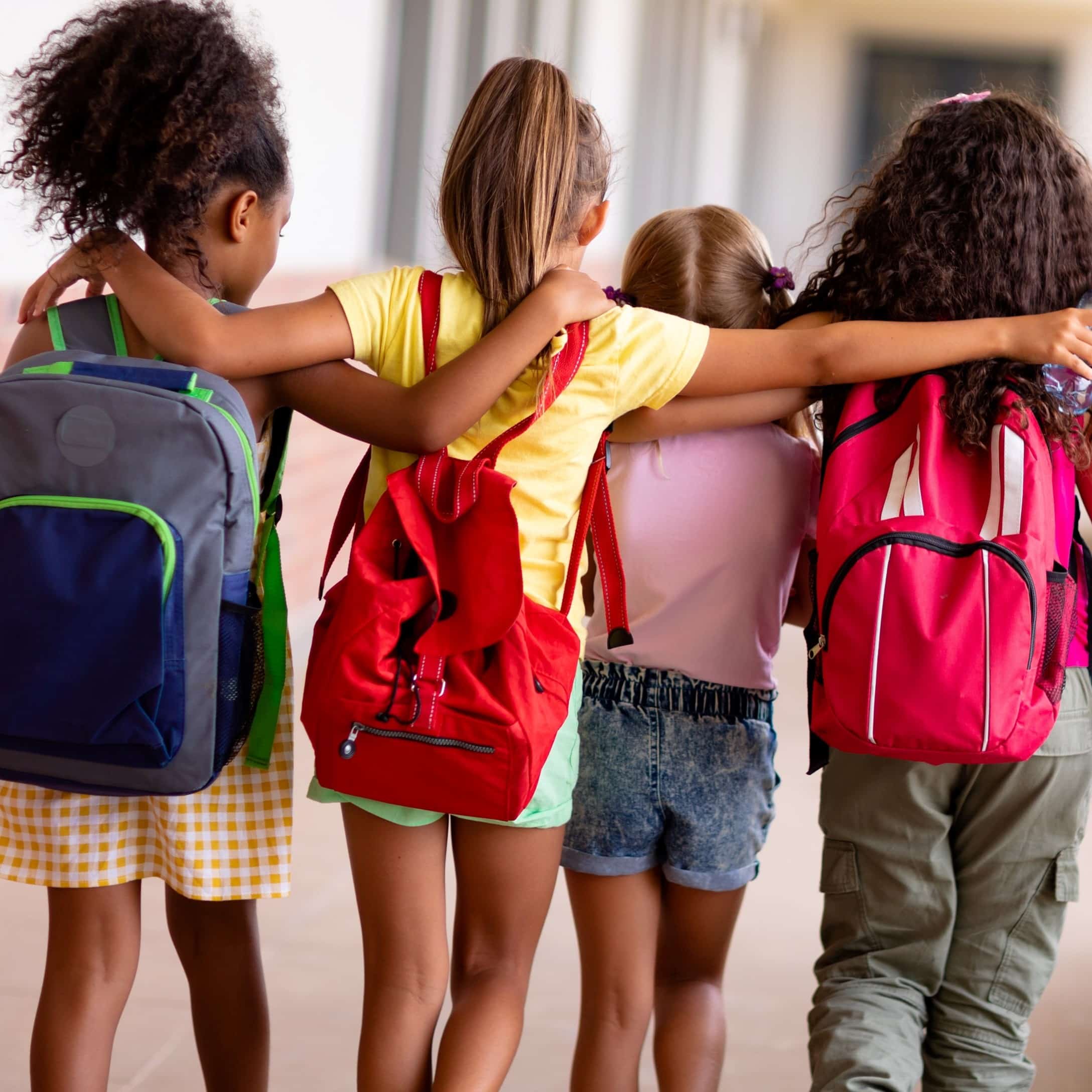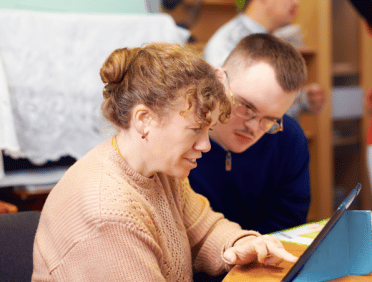Education safeguarding is a multidimensional commitment to ensuring children’s complete well-being and safety within the educational environment. It includes preventive measures, strong legislative frameworks, and careful policy and process implementation.
We examine the legislative landscape, specific vulnerabilities faced by students, complete safeguarding measures, obstacles, best practises, and the expanding role of technology in boosting these efforts.
What is Safeguarding in Education?
Safeguarding in education is a holistic strategy for assuring students’ well-being, safety, and protection in the educational setting. It entails putting policies in place and cultivating a culture that prioritises the physical, emotional, and mental well-being of all students in schools and institutions.
The basic purpose of safeguarding in education is to provide a safe and nurturing environment in which kids can learn and develop without fear of damage, abuse, neglect, or discrimination. This dedication extends to addressing a wide range of potential hazards and obstacles that students may face during their educational journey.
Key Elements of Safeguarding in Education
Safeguarding in education comprises a variety of critical factors that work together to create a safe and nurturing environment for pupils. These components are critical for preventing injury, improving well-being, and assuring the general safety of students at educational institutions.
Prevention of Harm
Safeguarding procedures are designed to keep students secure by ensuring their physical safety, mental well-being, and protection from abuse or neglect.
Creating a Safe Environment
Educational institutions are responsible for creating a safe and secure learning environment in which students feel protected and supported.
Legislative Framework
There is a strong legislative framework in place to advise and mandate safeguarding practises in educational settings. This framework specifies the obligations, responsibilities, and expectations for schools and institutions.
Awareness and Training
Staff, kids, and parents are trained on concerns about safety and security, such as recognising indications of abuse or neglect and understanding reporting processes. Training programmes ensure that everyone in the educational community is prepared to contribute to a safe environment.
Policies and Procedures
Educational institutions create and implement detailed safeguarding policies and procedures. These documents describe how the institution will prevent, detect, and respond to safeguarding issues.
Collaboration
Safeguarding is a team effort that includes not only educational institutions but also local governments, governing bodies, and community partnerships. This collaborative approach guarantees that safeguarding concerns are addressed holistically and in a coordinated manner.
Inclusivity and Respect
Safeguarding encompasses the development of inclusive and respectful school environments that celebrate diversity, prevent bullying and prejudice, and promote the well-being of all students.
Mental Health Support
Recognising the impact that mental health concerns have on students, safeguarding measures include mental health support services, counselling programmes, and awareness campaigns.
Online Safety
Given the digital age, safeguarding also entails teaching kids about online safety and digital citizenship, as well as promoting responsible internet usage and protecting pupils from online threats.
Prioritising Safeguarding Measures in Educational Institutions
Educational institutions are tasked with prioritising protection measures. The UK statutory framework acts as guidance, emphasising the importance of safeguarding in the educational context.
At its foundation, safeguarding in education means fostering an atmosphere in which pupils can grow without fear of injury or neglect. This goes beyond physical safety to include mental and emotional well-being. Schools and colleges must provide an environment that not only stimulates academic advancement but also ensures the nurturing and safeguarding of each student.
Legislative Framework for Safeguarding in Education in the UK
The statutory foundation for safeguarding in education in the United Kingdom is a strong structure meant to protect pupils and uphold their rights. The Education Act of 2002 is a cornerstone, outlining specific obligations and responsibilities for school safety. This legislation emphasises the importance of creating a safe and secure learning environment.
Key Legislations and Regulations Related to Safeguarding in Education
Safeguarding in education is based in the United Kingdom on a strong statutory framework and rules aimed at securing students’ well-being, safety, and protection. The following main pieces of legislation and regulations have a significant impact on the landscape of safeguarding in educational settings.
Education Act 2002: Establishing Duties and Responsibilities
The Education Act of 2002 is a cornerstone piece of legislation that addresses several aspects of education, including safeguarding. It makes educational institutions legally obligated to offer a safe and secure environment for pupils. The Act specifies schools’ responsibility for guaranteeing students’ welfare and protection, emphasising the necessity of a duty of care.
Specific clauses in the Education Act of 2002 emphasise the need for schools to make efforts to prevent damage, neglect, and abuse. This includes the installation of strict safeguarding regulations as well as staff training and open reporting procedures. The Act sets a framework that emphasises the critical need to foster an atmosphere in which kids can learn and grow without jeopardising their safety.
Children Act 1989 and 2004: Safeguarding the Welfare of Children
The Children Act 1989 and its subsequent revision in 2004 laid the framework for child welfare legislation in the United Kingdom. These acts establish children’s rights and the responsibilities of those who care for them, including educational institutions. The Acts emphasise schools’ duty of care to children, emphasising the need to preserve their wellbeing and keep them safe.
The Children Act includes measures for local governments to intervene in suspected situations of abuse or neglect, ensuring that necessary action is taken to protect the child’s welfare. These statutes emphasise the collaborative character of safeguarding by emphasising the importance of good communication and cooperation among schools, local governments, and relevant institutions.
Keeping Children Safe in Education Guidance: Outlining Safeguarding Expectations
The Keeping Children Safe in Education Guidance is statutory guidance that establishes a comprehensive framework for school-based safeguarding practises. This advice, which is updated on a regular basis to address new difficulties, describes the requirements for schools to create a safe learning environment.
The guidance covers a wide range of safeguarding issues, including recruitment practises, employee behaviour, recognising and responding to abuse, and developing a culture of vigilance. It emphasises the significance of continual training for employees to ensure they are prepared to face changing circumstances. The guideline is a useful tool for schools, giving a road map for establishing appropriate safeguarding procedures that are in accordance with regulatory obligations.
Education (Independent School Standards) Regulations 2014: Setting Safeguarding Standards
The 2014 Education (Independent School Standards) Regulations establish particular standards for independent schools, guaranteeing consistency in safeguarding procedures across all types of educational institutions. These requirements emphasise the importance of independent schools’ safeguarding policies, processes, and general well-being standards.
The necessity for independent schools to have strong child protection policies, conduct extensive background checks on staff, and implement clear reporting methods is key to this legislation. These regulations help to ensure a high degree of protection for pupils attending independent schools by establishing explicit criteria.
The Role of Local Authorities and Educational Bodies in Safeguarding Measures
Effective safeguarding measures necessitate collaboration between educational institutions and municipal governments, as well as the active participation of governing bodies and community partnerships.
Local governments are critical in providing supervision, support, and coordination for safeguarding measures. They collaborate with schools to ensure legislative compliance, perform inspections, and provide best practise recommendations. The collaborative partnership between local governments and schools makes it easier to identify and mitigate potential dangers, resulting in a seamless web of security for students.
Governing councils and educational entities inside schools also have substantial protection obligations. They are in charge of developing and implementing safeguarding policies, as well as ensuring that personnel are sufficiently trained and establishing a culture of vigilance. Educational institutions improve their capacity to address the unique difficulties that their students encounter by actively interacting with local authorities and community partners.
The Specific Vulnerabilities Faced by Students in Educational Institutions
Understanding the various vulnerabilities that students may experience in educational institutions is critical for designing effective safeguards. Educational settings can be dynamic situations with a wide range of hazards and challenges. We look at the most prevalent hazards and problems for children and young adults, emphasising the impact of bullying, discrimination, and mental health issues, as well as the possibility of abuse and neglect in educational settings.
Common Risks and Challenges for Children and Young Adults in Educational Settings
Academic Stress and Pressure
The competitive nature of academic contexts can cause stress and pressure on students to perform extraordinarily well, thereby affecting their mental health and well-being.
Peer Pressure
Peer pressure can influence students’ choices and decision-making by pressuring them to conform to social norms or engage in harmful behaviours.
Substance Abuse
Substance exposure and peer pressure may increase the risk of substance misuse among students, potentially leading to health and academic problems.
Social Isolation
Some kids may feel socially isolated, ostracised, or unable to connect with their peers, which can have a negative impact on their mental health.
Cyberbullying
Because of the prevalence of technology, cyberbullying has become a major concern. Through online channels, students may suffer harassment, intimidation, or exclusion.
The Impact of Bullying, Discrimination, and Mental Health Issues on Students
Bullying
Bullying, whether verbal, physical, or virtual, can have serious consequences for a student’s mental health, self-esteem, and overall well-being. It can cause anxiety, depression, and even suicidal thoughts.
Discrimination
Students may suffer prejudice because of their race, ethnicity, gender, sexual orientation, or financial background. Discrimination contributes to feelings of alienation, which negatively impact academic achievement as well as mental health.
Mental Health Issues
The academic atmosphere can aggravate pre-existing mental health difficulties or precipitate the start of new ones, such as anxiety and depression. Academic pressure, peer pressure, and society’s expectations can all contribute to mental health issues.
Pressure to Conform
Students may feel compelled to adhere to social norms, which may conceal their genuine selves and contribute to mental health concerns.
The Potential for Abuse and Neglect within School Environments
Physical Abuse
In some cases, students may endure physical abuse from classmates or, on rare occasions, adults in the educational setting. Recognising and responding to physical abuse is critical for safety.
Emotional and Psychological Abuse
Emotional and psychological abuse, such as verbal harassment or manipulation, can have long-term impacts on a student’s mental health and may go unreported if sufficient monitoring is not maintained.
Neglect
Neglect can present itself in a variety of ways, including as poor monitoring, a lack of emotional support, or a failure to meet a student’s basic requirements. Neglect endangers a child’s overall growth and safety.
Sexual Abuse
Sexual abuse has the potential to occur in educational settings, emphasising the necessity for strong safeguarding procedures and awareness efforts to prevent and handle such events.
Comprehensive Safeguarding Measures in Educational Institutions
Comprehensive safeguarding measures are required at educational institutions to ensure a secure and nurturing environment that prioritises students’ well-being and safety. These safeguarding measures include a variety of techniques, policies, and practises aimed at avoiding harm, alleviating vulnerabilities, and effectively responding to safeguarding concerns.
Robust Safeguarding Policies and Procedures in Schools and Colleges
A safe learning environment is built on safeguarding policies and practises. These documents should be examined and updated on a regular basis in order to reflect current difficulties and legislative changes. Clear norms for employee behaviour, reporting channels, and protocols for dealing with safeguarding incidents are all required.
Training and Support for Staff on Recognising and Responding to Safeguarding Issues
Staff education on safeguarding is critical for effective prevention and intervention. Training should include recognising symptoms of abuse, reporting processes, and the need to keep a vigilant and supportive environment. Regular refresher training and seminars guarantee that staff are up-to-date and capable of dealing with changing difficulties.
Transparent Reporting Protocols for Students, Staff, and Parents
Creating an open and accountable environment requires the establishment of transparent reporting systems. Students, faculty, and parents should understand how to report concerns to ensure that any issues are addressed as soon as possible. For people who are hesitant to come out, anonymous reporting systems might add an extra layer of confidentiality.
Safe and Supportive Learning Environments for Students
Providing a secure and supportive learning environment for kids is critical for their general well-being and academic success. A good and inclusive environment leads to a healthy educational experience, allowing kids to develop emotionally, socially, and academically.
Inclusive and Respectful School Cultures to Prevent Bullying and Discrimination
Schools must actively develop inclusive, courteous, and diverse cultures. Anti-bullying measures, diversity education, and awareness campaigns all help to foster a supportive environment in which children feel valued and accepted.
Mental Health Support Services and Counselling Programmes for Students
Recognising the mental health problems that students experience, educational institutions should make support services available. Counselling programmes, mental health awareness initiatives, and collaborations with outside mental health practitioners are examples of this. Early intervention and de-stigmatizing mental health conversations help to create a healthy school climate.
Education on Online Safety and Digital Citizenship
In a technologically driven society, education on online safety and digital citizenship is critical. Students should be prepared to navigate the digital environment responsibly, recognising potential hazards and comprehending the consequences of their online actions. Cyberbullying prevention, social media awareness, and appropriate internet use should all be part of the curriculum.
Challenges and Best Practises in Safeguarding within Educational Institutions
While safeguarding is a priority, educational institutions confront difficulties in effectively implementing it. By addressing difficulties with these best practises, educational institutions may create a strong safeguarding framework that prioritises students’ well-being and safety. This proactive and thorough strategy helps to provide a safe and supportive learning environment for all members of the educational community.
Resource Limitations and Staff Training Challenges in Implementing Safeguarding Measures
Resource constraints can make it difficult to adopt complete safeguarding measures. Educational institutions must provide adequate resources for staff training, infrastructure, and support services. Adequate personnel levels and continued professional development contribute to an alert and well-prepared workforce.
Effective Safeguarding Protocols in Schools and Colleges
Developing successful protection protocols necessitates ongoing development and modification. Regular policy and procedure reviews, guided by staff, student, and parent feedback, ensure that the institution remains responsive to developing difficulties. This iterative method enables the refining of protocols to fit the student population’s specific demands.
Best Practises in Creating a Nurturing and Protective Educational Environment
Providing a caring and safe educational atmosphere is critical for students’ general well-being and development. A friendly and supportive environment improves learning outcomes and fosters a sense of belonging within the school community.
Incorporating Student Input in Safeguarding Measures
To ensure that policies are well-received by students, they must be involved in the development and evaluation of safeguarding measures. This involvement develops a sense of ownership and connection to the policies that are adopted. Student councils, forums, and polls provide vital information that can help to shape the institution’s approach to safety.
Community Engagement and Partnerships
Engaging the local community and forming collaborations with other organisations all contribute to a comprehensive approach to safeguarding. Collaborative initiatives extend the support network for students outside the school gates, providing a secure web.
Continuous Evaluation and Improvement
Safeguarding is a dynamic process that necessitates ongoing examination and improvement. A dynamic and adaptive system benefits from regular assessments of the effectiveness of safeguarding measures as well as a commitment to resolving emergent difficulties.
The Role of Technology in Enhancing Safeguarding Efforts in Education
Technology is critical in modern education, and the deliberate integration of technology can considerably improve safeguarding efforts within educational institutions. Here’s an exploration of the multiple roles technology plays in establishing a safer environment for kids, from monitoring and reporting occurrences to facilitating communication and teaching digital citizenship.
Digital Platforms for Monitoring and Reporting Safeguarding Incidents
Digital platforms simplify and expedite the monitoring and reporting of safeguarding incidents. Online reporting tools help educational institutions track trends and patterns, allowing them to take preventive measures.
Educational Technology for Enhanced Communication and Reporting Processes
Educational technology improves communication and reporting processes inside educational organisations. Integrated communication mechanisms between staff, students, and parents guarantee that safeguarding information is efficiently shared. This technology streamlines reporting methods and allows for a more coordinated response.
Ethical and Responsible Use of Technology in Safeguarding Students in Educational Settings
While technology is a great tool, it must be used in accordance with ethical values and with responsibility. Digital literacy should be prioritised in educational institutions, with students learning how to navigate online places safely and ethically. To secure privacy and consent, cybersecurity safeguards should be adopted, and ethical concerns should guide the use of surveillance technologies.
Key Takeaways for Safeguarding in Education
Understanding and implementing safeguarding measures in school is critical to providing pupils with a safe and loving environment. The regulatory framework, together with comprehensive plans and responsible technology use, guarantees that educational institutions in the United Kingdom prioritise the well-being and safety of every student in their care.
The Education Act 2002, Children Act 1989 and 2004, Keeping Children Safe in Education Guidance, and Education (Independent School Standards) Regulations 2014 all provide duties and obligations for safeguarding in educational contexts.
- Vulnerabilities Faced by Students
Academic stress, peer pressure, substance misuse, bullying, discrimination, mental health difficulties, and the possibility of abuse and neglect are among the issues that students encounter in educational institutions.
- Comprehensive Safeguarding Measures
Effective safeguarding necessitates strong rules and processes, ongoing staff training, transparent reporting methods, and a commitment to fostering a safe and supportive learning environment.
Fostering an inclusive and respectful school culture, with a focus on positive behaviour reinforcement and activities that promote diversity, is critical to reducing bullying and prejudice.
Counselling services that are easily accessible, mental health awareness initiatives, and educational programmes all help to address the impact of mental health concerns on students in educational settings.
Through digital reporting platforms, instructional technology for communication, digital citizenship education, surveillance and security systems, and data analytics for risk identification, technology improves safeguarding activities.
Well-defined protocols, extensive staff training, incorporating the entire school community, regular policy reviews, and involving students in decision-making processes are all required for effective safeguarding.
- Creating a Nurturing Environment
Promoting a healthy school culture, clear communication, a student-centric approach, strong student-teacher interactions, and proactive mental health support are all best practises for building a caring atmosphere.
Regular assessments, data-driven decision-making, and a commitment to continuous improvement are critical for ensuring that safeguarding measures continue to be effective.
- Balancing Technology and Ethical Considerations
Regular assessments, data-driven decision-making, and a commitment to ongoing improvement are essential for guaranteeing the effectiveness of safeguarding measures.
Safeguarding Training
- Learn Q’s Safeguarding Children Level 1 is an introductory course that provides a basic understanding of safeguarding vulnerable children. It covers the concept of safeguarding, the importance of safeguarding, the legislation in place to protect vulnerable children, the signs of abuse and how to avoid them, and how to respond when a vulnerable child discloses they are being abused or neglected. This course is suitable for anyone who works with vulnerable children, including managers, supervisors, employees, and volunteers at all levels.
- Learn Q’s Safeguarding Children Level 2 course, on the other hand, is a more advanced course that builds on the knowledge gained in Level 1. It provides a more in-depth understanding of safeguarding, including recognising abuse, the responsibilities of different safeguarding roles, effective communication, and how to handle concerns and incidents related to safeguarding. This course is designed for those with additional safeguarding responsibilities, such as those who work in hospitals, general practices, nursing homes, care homes, or domiciliary care, as well as in religious organisations and community organisations.
- Learn Q’s Preventing Radicalisation course is designed to help frontline sectors to be aware of how to prevent radicalism and extremism. Especially for individuals who have contact with adults who may be vulnerable. It raises awareness of the signs and techniques of radicalisation so that you can provide support and guidance to individuals in need as well as save their lives if you can identify these signs.
You can get further savings by purchasing one of Learn Qs money saving bundles, such as:
These courses are ideal for those who work in hospitals, general practices, nursing homes, care homes, domiciliary care, as well as in religious and community organisations. By completing this course, you will be better equipped to handle safeguarding concerns and to ensure the safety and well-being of vulnerable adults.
At Learn Q, we are committed to providing high-quality training that meets the needs of professionals across a range of industries. Our Safeguarding Children courses are designed to provide you with the knowledge and skills you need to excel in your role and make a real difference in the lives of vulnerable children. Sign up today and take the next step in your career!












